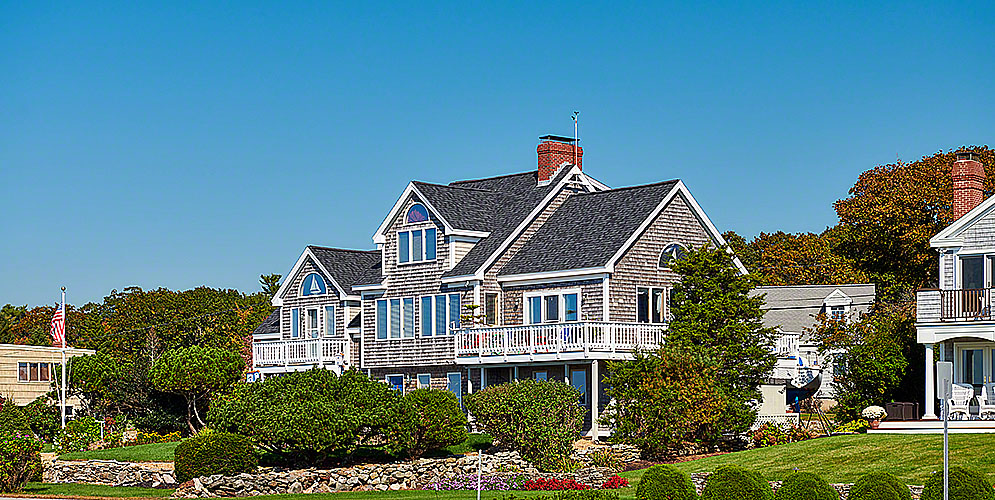
How Do I Find A Leak In My Chimney?
A fireplace is nothing less than essential during the bone-chilling winter months and a chimney is just as important if you don’t want your room to be filled with ashy smoke. However, sometimes, there can be problems with the chimney that can affect its performance, one of them being chimney leaks. A chimney inspection can reveal a leak. Here is everything you need to know about spotting a chimney leak.
How To Find Chimney Leaks?
Here are some signs that can give you an idea about a chimney leak.
A Watery Fireplace
First and foremost, you need to look for puddles of water around the base of the fireplace. If there’s water coming down the chimney in the fireplace, then there’s a high possibility that your chimney is leaking and there is a proper passage for water to drip down the flue.
It can also be evident by the performance of the fireplace. If the fire is getting extinguished pretty quickly or it’s not getting warm enough faster, then water might be the main culprit here.
Cracks In The Body
The flue or chute is the most exposed part of a chimney and it can be greatly damaged by weather. If there are visible cracks in the body of the chimney, chances are that water is already seeping through the cracks and into the fireplace, affecting the fireplace and its performance. You can do a water test to further confirm your suspicion about leaks.
You can douse the entire chimney with water, using a hose, and check for water leaks in the fireplace as well as the flashing. If there’s water seeping inside the fireplace, then there is definitely a problem.
Trust Your Ears
Do you hear dripping in the fireplace or above the roof, especially when there’s a downpour outside? You might not want to ignore this alarming sign. If there’s constant dripping of water, especially in the attic or top part of the house, then there’s probably a huge leak that’s letting the rainwater in the house.
You definitely want to call someone in, to have a look at the chimney, especially from the inside, because if there aren’t cracks on the outside, then the interior insulated wall can be damaged and you want to get it repaired as soon as possible.
Flaking Of The Chimney
Flaking is the peeling away or withering of the bricks or stones, by which the main body of the chimney is made. This is very common and it can occur in older chimneys or in chimneys that aren’t built with quality materials. Bricks usually don’t flake, but after a lot of time has passed, this can become a problem.
Flaking of the stone/bricks can expose the fragile interior of the chimney and it’s only a matter of time until cracks start forming and water starts to penetrate through said cracks and cause damage.
Problem Areas Of Chimney
There are specific areas and parts of a chimney, where leaks can occur the most. So, the next time you’re looking for leaks, try to have a closer look at these places.
Chimney Flashing
If you’ve ever seen a chimney, then there’s a part of the chute that meets the roof and these things are held in place with cement and metal sheets. This is basically the chimney flashing. As a construction rule, the chimney flashing is supposed to be watertight, but everything has a deterioration date.
Over time, due to harsh weather and winds, this watertight seal can get damaged and cracks can form on the base of the chute, leading to leaks in the end. Carry out chimney repair Columbia MD to fix chimney flashing and other problems.
Exterior Of The Insulation
You may or may not know this, but chimneys are also insulated. They have a sheet of veneer, either made out of bricks or stones, covering the walls that allow the chimney to be manageable.
However, this exterior wall of insulation is also prone to damage and if you’re not regularly having the chimney inspected, then the damage can worsen and can lead to cracks and fissures all over the chimney wall and which can provide an easy pathway for water to seep inside and into the fireplace.
Vent Flues
The chimney flue is basically the long chute that stretches from the top of the fireplace all the way up to the top. It’s a passage for the smoke to eject and ventilate out of the firebox and keep the room smoke-free. This chute is long and sturdy, but that doesn’t mean that it can’t get cracked or damaged.
As essential as a flue is, it can also be a hiding place for small birds, animals, and other critters that seek refuge from harsh weather. The animals housed in the flue can damage it and, if it’s left unnoticed, it can lead to obstructions and cracks.
Chimney Cap
The chimney cap is like a hat on top of the opening of the flue that doesn’t allow rain, wind, and small animals from getting inside. It’s usually made out of metal and sits on top of the chimney, sided with metal mesh for extra protection.
However, a lot of the time, because not everything is durable, the chimney cap can get cracked and allow water to damage the exposed chimney flue, and that in turn, can lead to water seeping down the flue and damaging the inside of the chimney.
How Do Leaks Happen?
Here are some common reasons why chimney leaks can occur.
Improper Construction
This is probably the most common reason why cracks and leaks occur as frequently. If you’re considering adding a fireplace to your room, then you’re going to need a chimney for the ventilation of smoke and soot, produced by the burning embers. Faulty construction of a chimney can also lead to cracks and, ultimately, leaks.
This is why it’s so important that you find the right contractors for building a chimney, otherwise, you’ll be paying a lot for the damages, if you choose an amateur worker or someone who doesn’t have the slightest idea as to how a chimney is built.
Mortar Decay
Mortar is the dark substance that’s used to hold bricks together when building a chimney. Think of it as a glue that literally holds everything together. This can also wither away with time and the erosion of mortar can lead to gaping holes and cracks in the chimney that can ultimately lead to leaks.
Top Is Cracked
The top of the chimney is known as a crown. It’s usually made out of cement and it’s the first thing that can get cracked and can lead water from the outside to seep inside the chimney walls. You need to regularly check your chimney for reasonably sized cracks because small fissures can turn into deep chips and cracks and can lead to extensive damage.
Conclusion
The last thing you need is your chimney letting water in, through the leaks and into the house and that’s absolutely frustrating. Now that you know how to find chimney leaks, you can contact chimney contractors Bowie to fix the leak. If you can’t find the leak but suspect it, hire an expert to inspect your chimney.
